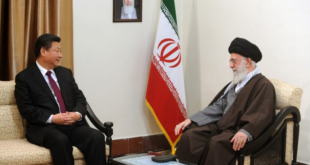On June 29, 2021, at least 10 persons were killed and eight injured, when terrorists triggered a landmine explosion that struck a van in the Godar area of Kurram District in Khyber Pakhtunkhwa (KP).
On June 2, 2021, an Army soldier, identified as Lance Naik Waqas Ahmed, was killed in a landmine explosion triggered by terrorists, close to an Army check post in the Kaniguram area of South Waziristan District, KP.
On May 27, four children were injured in a landmine explosion triggered by terrorists in the Tandi area of Kurram District in, KP.
According to partial data compiled by the South Asia Terrorism Portal (SATP), KP has already recorded a total of at least seven incidents of landmine explosions by terrorists resulting in 14 deaths and over 16 injured in 2021 (data till July 4). During the corresponding period of 2020, two such incidents resulting in three deaths and five injured were reported. Since March 6, 2000, when SATP started compiling data on conflicts in Pakistan, KP has accounted for 156 such incidents resulting in 279 deaths and 362 injured. [Since media access is heavily restricted in most disturbed areas of Pakistan, and there is only fitful release of information by Government agencies, the actual figures could be much higher.]
Moreover, a large number of landmines planted by terrorists during peak conflict periods (between 2008-2015) in the tribal areas of KP and Federally Administered Tribal Areas (FATA), which was merged with KP on May 31, 2018, continue to explode, killing and injuring locals.
Significantly, when Internally Displaced Persons (IDPs) started returning to their homes in 2017 after a series of military operations in the tribal areas of KP, they found their villages and areas surrounding their homes littered with deadly landmines.
Mohammad Mumtaz Khan, an IDP from South Waziristan, describing his personal horror story about IEDs, stated on April 26, 2018, “I am lucky that I got away with a small injury. It may not be so the next time around.” He added, further, that the mountains and valleys were “teeming” with explosive remnants of war. Raza Shah, the Executive Director of Sustainable Peace and Development Organization (SPADO), noted on April 25, 2018, “Despite having cleared the area of militants, it is not possible for many to move about freely as the place remains infested with landmines.”
Indeed, during a hearing in Peshawar High Court (PHC) on June 22, 2021, the petitioners, advocate Sajjad Ahmad Mehsud and four other lawyers, claimed that during the last couple of years, 178 landmine explosions had taken place in South Waziristan District alone, leaving 800 residents dead, 250 paralysed and 77 visually impaired. They added that residents in South Waziristan District had also lost around 4,000 cattle heads to landmine blasts. The petitioners submitted that, since May 28, 2021, three landmine explosions had taken place, leaving 15 children and three Army personnel dead. The petitioners claimed that landmine explosions were killing and injuring more and more residents, but the relevant authorities remained unmoved. The petitioners requested the Court to direct the respondents, including the Federal and KP Governments, to remove landmines, especially in South Waziristan District, and highlight the affected areas as Red Zones. The PHC bench directed the Federal Government to produce a detailed report on landmine explosions in KP, especially South Waziristan, within three weeks.
Earlier, on June 4, 2021, Senator Dost Mohammed Khan, who belongs to the Mehsud tribe of South Waziristan, moved an adjournment motion in the Senate to draw the attention of the Defence Minister Pervez Khan Khattak to the issue of de-mining in KP, particularly in South Waziristan, North Waziristan, Bajaur, Khyber and Khurram Districts.
On June 6, 2021, the United Nations Children’s Emergency Fund (UNICEF) expressed its deep concern over recent incidents of landmine explosions, resulting in the deaths and injuries to children. Aida Girma, UNICEF representative in Pakistan stated,
No child should fall victim to landmines or explosive remnants of war. The UNICEF will continue to support the government of Pakistan in mine risk education to raise awareness on the risks posed by landmines and explosives among children and families living in crisis-affected areas. It is equally important to continue clearing minefields and to rehabilitate and reintegrate those who have survived accidents.
In a press conference on February 22, 2021, Inter-Services Public Relations (ISPR) spokesperson Major General Babar Iftikhar disclosed that, till then, more than 72 kilometres of land had been cleared of mines in the tribal region. “A total of 48,000 mines have been defused and work is still going on in 42 per cent of the areas which will be completed soon,” he added. According to analysts, when the militants moved into Pakistan after the US onslaught in Afghanistan in the aftermath of the September 11, 2001, terrorist attacks in the US, they laid landmines to secure their fronts and strongholds.
On June 12, 2021, Dawn reported that the Security Forces had completely cleared Malakand and Bajaur Districts of explosives, including landmines, while the clearance operation in other Districts was in progress. According to the report, 37 Army personnel were killed in landmine blasts and 17 had suffered injuries during de-mining work since 2018. Around 80 square kilometres in South Waziristan and North Waziristan were yet to be de-mined.
While the militancy in the tribal areas of Pakistan has been controlled to a certain extent, the explosive remnants of war remain a grave threat to life in the region.
 Eurasia Press & News
Eurasia Press & News



